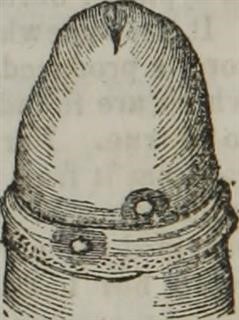The Infertility Organization
Infertility Treatments Hormone Injections
You found your source for complete info and resources for Infertility Treatments Hormone Injections online.
In some cases, simply removing the polyp solves infertility. A routine part of the initial evaluation is testing of specific serum hormone levels, which usually includes FSH, LH, testosterone, and prolactin. The content of counselling may differ depending on the concerned couple and the existing treatment options. It is also important to increase the frequency of intercourse by having well-timed sex regularly to improve fertility. This averts normal ascension and motility of the sperm. The rising number of obese individuals may be due in part to an energy-rich diet as well as insufficient physical exercise. In addition to other potential health risks, obesity can have a significant impact on male and female fertility.
There are different studies, for both women and men.[69] Spermatogonial stem cells trasplant: it takes places in the seminiferous tubule. They don’t have any reason to suspect they may have infertility until they start trying to conceive. Clinical examination Full clinical examination of both partners usually stands for the underlying physical problem [17-22,24-26], (Appendix 2). In GIFT, the sperm and eggs are mixed together before a doctor inserts them.
Here are Some Even more Info on Female Infertility Rates Australia

More Resources For Female Infertility Rates Australia
Physical Problems A variety of physical problems can cause male infertility. These problems either interfere with the sperm production process or disrupt the pathway down which sperm travel from the testes to the tip of the penis. These problems are usually characterized by a low sperm count and/or abnormal sperm morphology. The following is a list of the most common physical problems that cause male infertility: Variocoele: A varicocele is an enlargement of the internal spermatic veins that drain blood from the testicle to the abdomen (back to the heart) and are present in 15% of the general male population and 40% of infertile men. These images show what a variocoele looks like externally and internally. A varicocele develops when the one way valves in these spermatic veins are damaged causing an abnormal back flow of blood from the abdomen into the scrotum creating a hostile environment for sperm development. Varicocoeles may cause reduced sperm count and abnormal sperm morphology which cause infertility. Variococles can usually be diagnosed by a physical examination of the scrotum which can be aided by the Doppler stethoscope and scrotal ultrasound. Varicocoele can be treated in many ways (see treatment section), but the most successful treatments involve corrective surgery. With laparoscopy providing tissue diagnosis, and helping to achieve the final diagnosis without any significant complication and less operative time, it can be safely concluded that diagnostic laparoscopy is a safe, quick, and effective adjunct to non‑surgical diagnostic modalities, for establishing a conclusive diagnosis, but whether it will replace imaging studies as a primary modality for diagnosis needs more evidence.[34] History[edit] Hans Christian Jacobaeus It is difficult to credit one individual with the pioneering of the laparoscopic approach.
Even more Details About Diagnose Infertility Female
Risk factors for male infertility include obesity, age (over 40 -- yes, men also have biological clocks), current or previous infection of an STD, smoking, or excessive drinking. Long-term Economic Benefits Attributed to IVF-conceived Children: A Lifetime Tax Calculation. (PDF, 225 KB) The American Journal of Managed Care, 2008. These injections are taken nightly, typically for 5 – 10 days, and act directly on the cells of the ovary to stimulate egg development.
Below are Some More Details on Infertility Treatments Hormone Injections
The Relationship of Abnormal Semen Parameters to Male Fertility. (PDF, 4 MB) Human Reproduction, 1989. 3) Insemination: Intrauterine insemination, also known as IUI, is a process by which sperm is washed and prepared for placement into the uterine cavity, therefore bypassing the cervix and bringing a higher concentration of motile sperm closer to the tubes and ovulated egg. Pregnancy with Sperm Aspiration from the Proximal Head of the Epididymis: A New Treatment for Congenital Absence of the Vas Deferens. (PDF, 2 MB) Fertility and Sterility, 1988. Therefore, it is particularly important to evaluate both partners when investigating infertility. 8,26,27 As opposed to laparoscopy or hysteroscopy, hysterosalpingography is a minimally invasive procedure with potentially therapeutic effects and should be considered before more invasive methods of assessing tubal patency. Patients who do not achieve ovulation after three to six cycles should be referred to an infertility specialist for further treatment. Common causes of infertility of females include: ovulation problems (e.g. polycystic ovarian syndrome, PCOS, the leading reason why women present to fertility clinics due to anovulatory infertility.[58]) tubal blockage pelvic inflammatory disease caused by infections like tuberculosis age-related factors uterine problems previous tubal ligation endometriosis advanced maternal age immune infertility Males[edit] The main cause of male infertility is low semen quality. 21,22 Evaluation of Women Jump to section + The etiology of female infertility can be broken down into ovulation disorders, uterine abnormalities, tubal obstruction, and peritoneal factors. Transmission of Male Infertility to Future Generations: Lessons from the Y Chromosome. (PDF, 303 KB) Human Reproduction Update, 2002.
Previous Next
See also
Infertility and Contraceptive Pills
Infertility Introduction
Infertility Clinics in Houston Texas